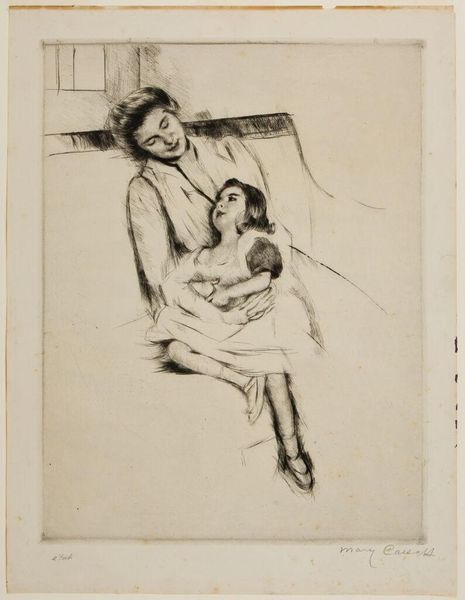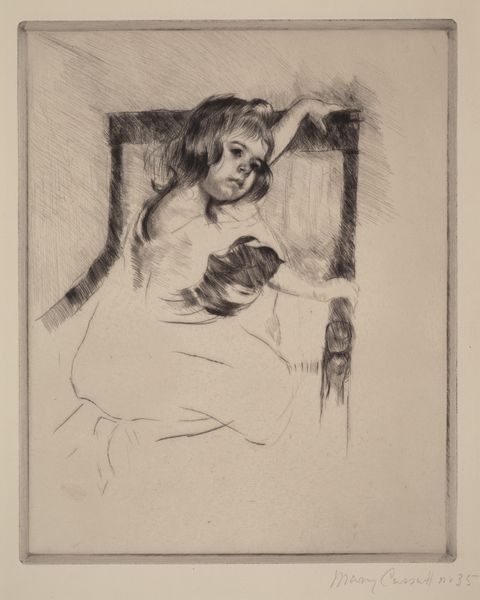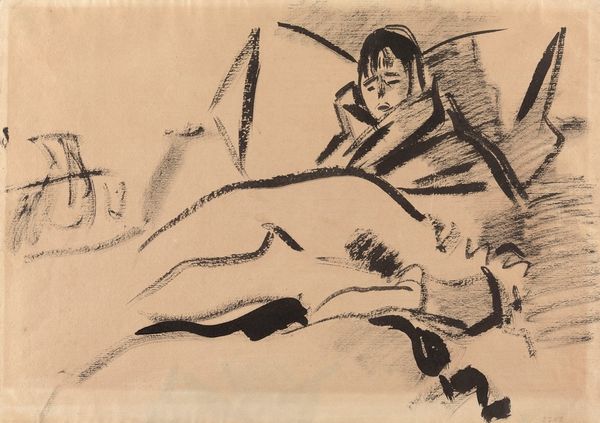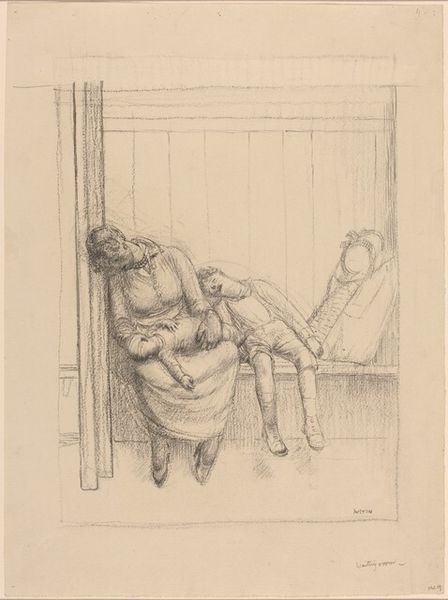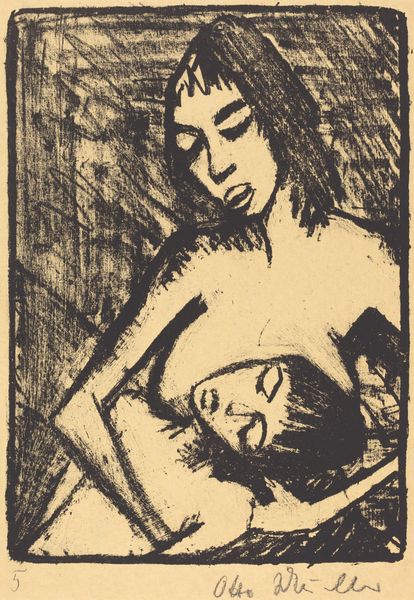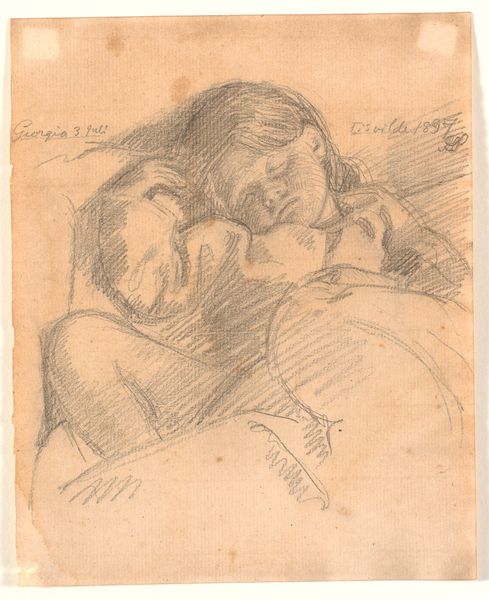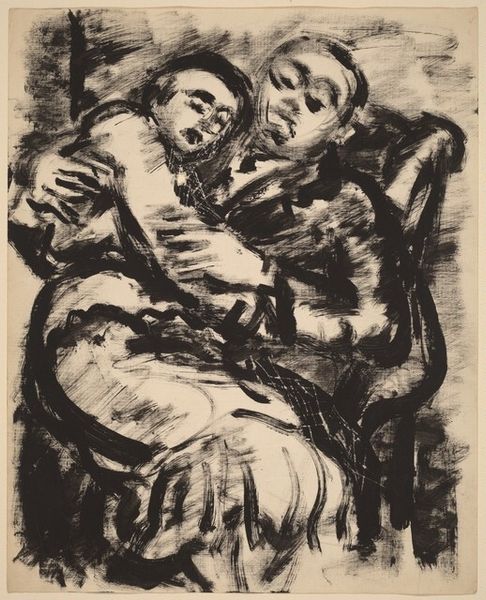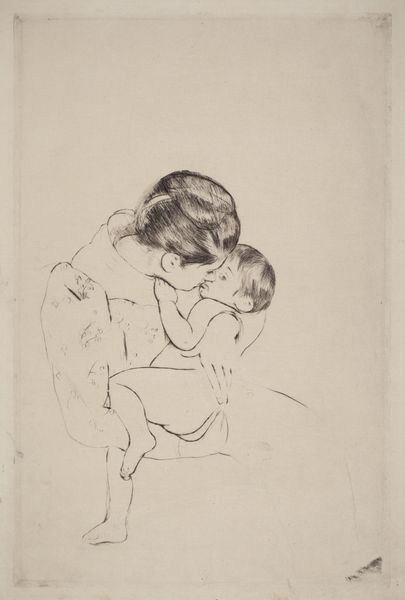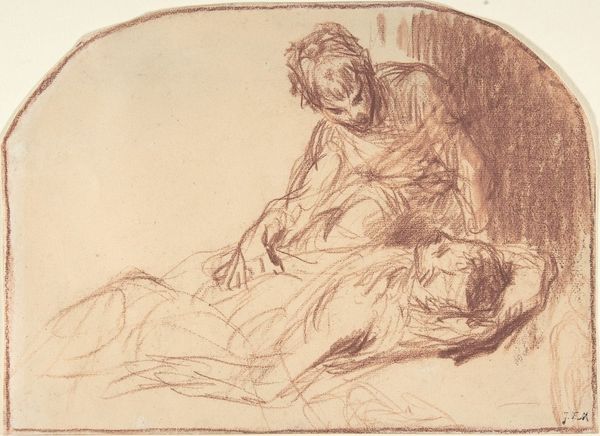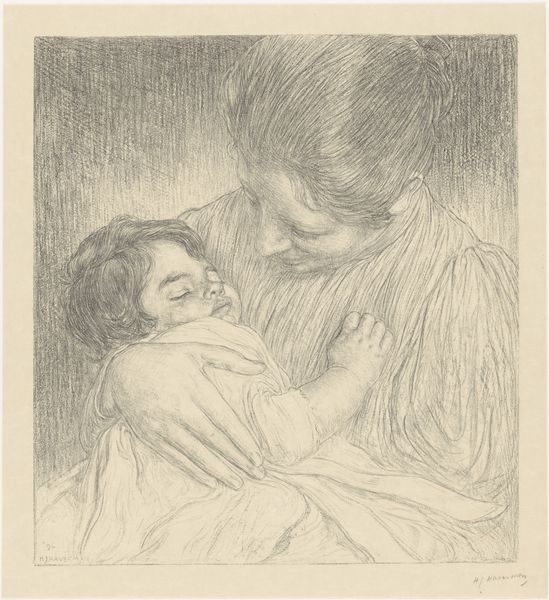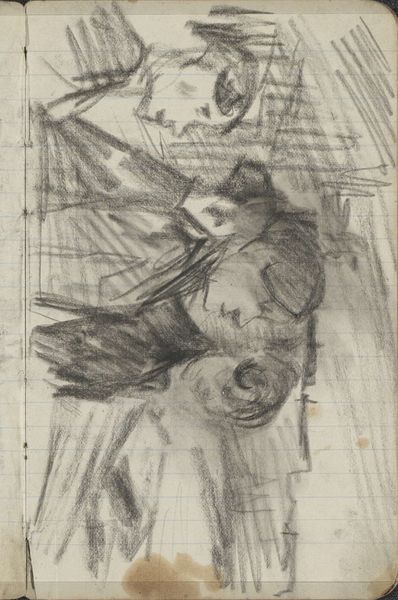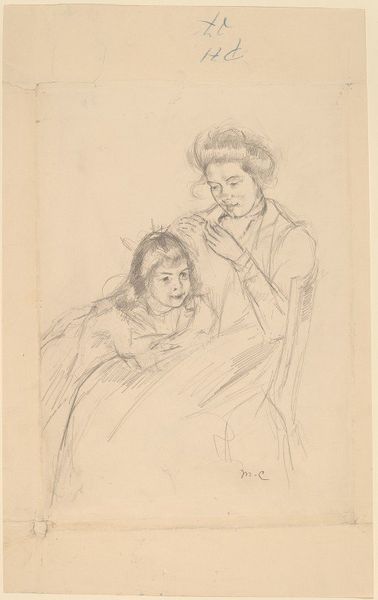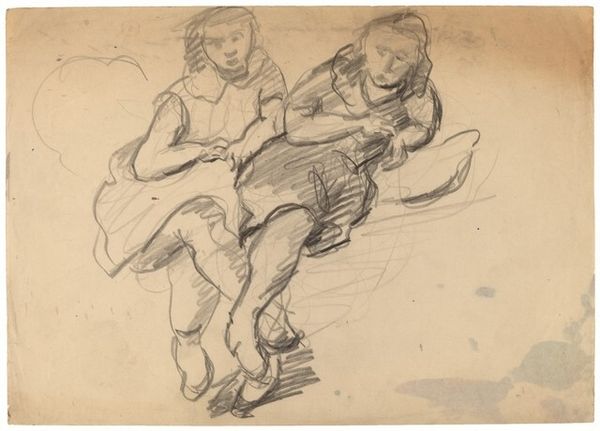
Copyright: Public Domain: Artvee
Editor: This is "Reine and Margot Seated on a Sofa," a pencil drawing by Mary Cassatt, around 1902. I find it interesting how Cassatt captures this casual, tender moment with such minimal lines. What can you tell us about its visual language? Curator: Note the dominance of line as the primary means of conveying form and emotion. Cassatt's economy of line—a signature of her graphic work—achieves a remarkable sense of intimacy. The composition is structured around a clear diagonal, running from the upper left to the lower right, giving it a dynamic tension despite its apparent simplicity. Editor: So, you’re focusing on the lines, like the semiotics of Impressionism! Are you saying she focuses more on the visual depiction rather than the scene? Curator: Precisely. Forget narrative sentiment. Concentrate, instead, on the visual rhythm established by the varied pressure of the pencil strokes. Observe how darker, more assertive lines define the contours of the figures, while fainter lines suggest the softness of the sofa and the surrounding space. Do you notice any repetition, for example, or echoing forms? Editor: Yes, the curve of the mother's back is almost mirrored in the set of the child's shoulders. How would this enhance my understanding? Curator: The echoing enhances the unity of the composition, creating a visual harmony between the two figures. Furthermore, by abstracting these forms to pure visual shapes Cassatt invites us to consider relationships first as design elements and then as an emotional dynamic between the two. Editor: Fascinating. I never considered approaching it quite that analytically, thinking of form before narrative. Thank you. Curator: My pleasure. Paying close attention to the artistic language allows us to interpret more personally without depending so much on the scene's subject matter.
Comments
No comments
Be the first to comment and join the conversation on the ultimate creative platform.
